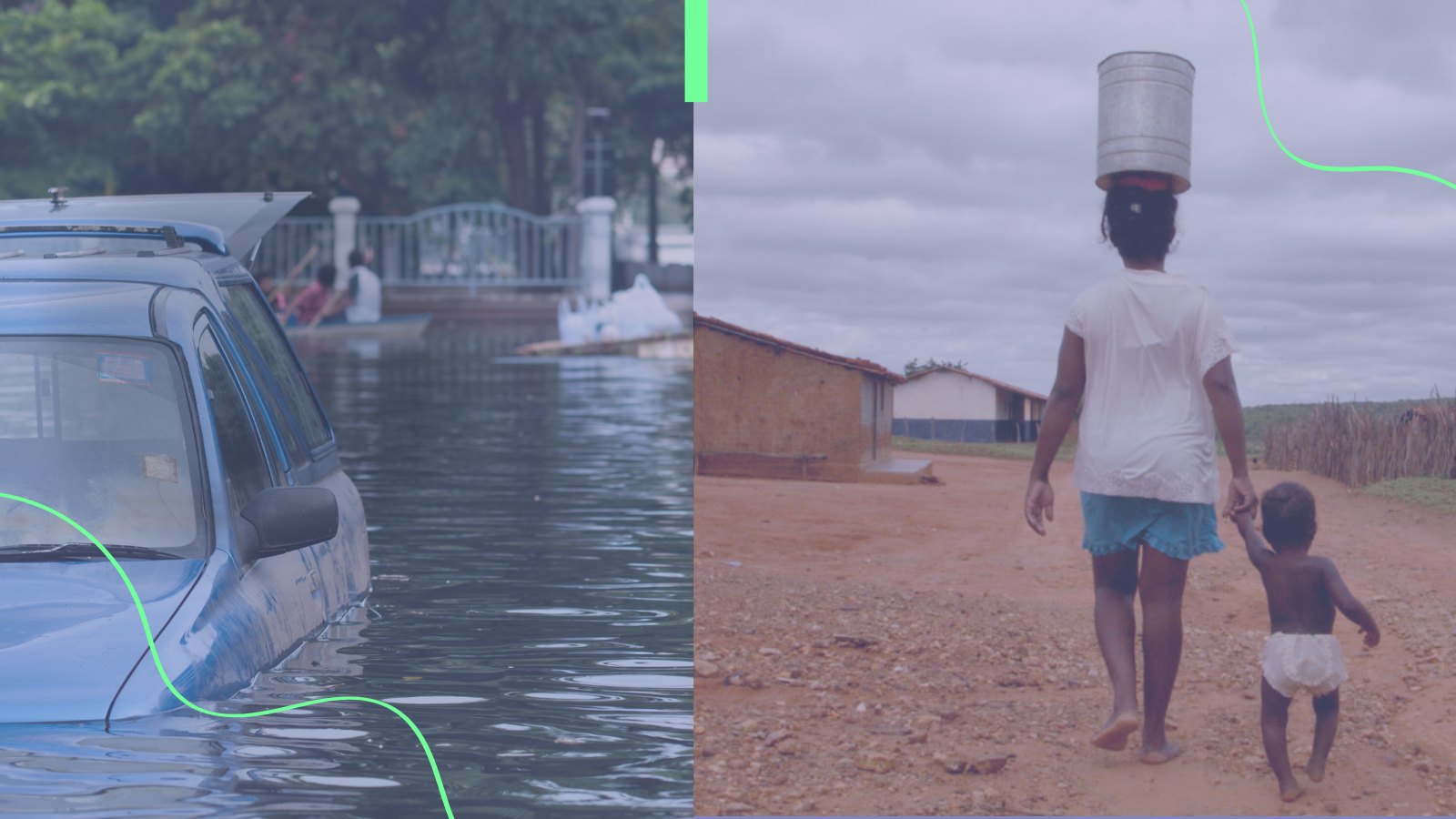Lack and excess of water: how can we contribute to maintaining balance?
Water, an essential resource for life, faces a global challenge: the imbalance between scarcity and excess.
On the one hand, drought and lack of access to drinking water affect 25% of world population, impacting the health of millions of people.
On the other hand, intense rains are resulting in flooding in cities, causing material damage and putting the safety and well-being of the population at risk.
All extremes make us see (and experience) a worrying scenario.
Excess brings with it fury: who has never imagined the force of water when seeing news of cars and houses being carried away by the current?
Furthermore, floods, combined with high temperatures, increase the risk of the spread of diseases, such as dengue fever, for example.
Scarcity has a face that already impacts millions of people around the world. Large cities already ration water, assuming that demand is greater than the available supply of water.
It is essential that each of us, individuals and companies, take responsibility for contributing to maintaining balance.
— But how can we do that?
From reducing daily water consumption to investing in technologies to improve distribution to the population, every action counts towards a more sustainable future for everyone.
Conscious Consumption: Reducing water consumption on a daily basis is essential. Taking shorter showers, fixing leaks and reusing water whenever possible can make a big difference in the long run.
Investment in Sustainable Technologies: The adoption of more efficient technologies for treatment, reuse and reduction of losses that occur during distribution is one of the essential pillars to face shortages. collect water from springs.
Integrated Water Resources Management: Develop integrated water resources management policies and practices that take into account the needs of local communities and the protection of ecosystems
